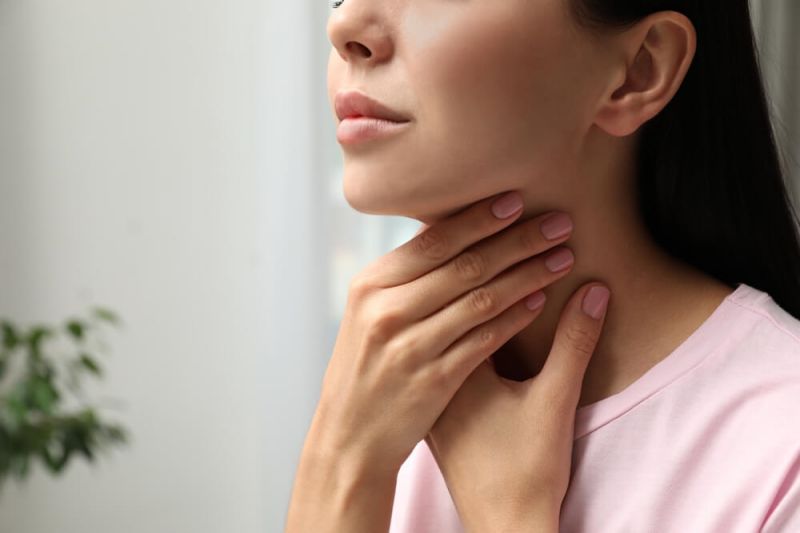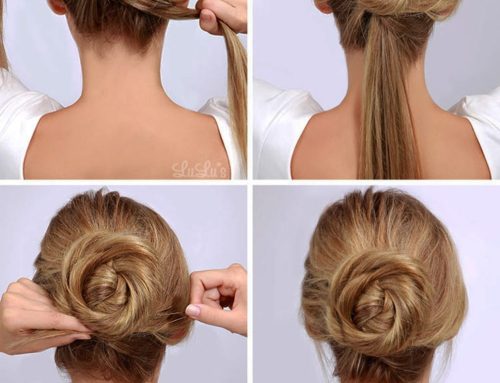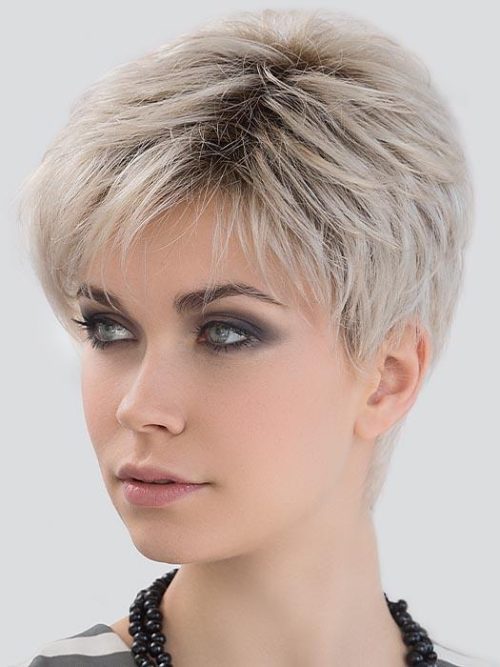Introduction
Welcome to our blog, where we embark on a journey to bid farewell to thinning hair and embrace a fuller, healthier mane! If you’ve been troubled by the sight of your thinning locks, fret not, for we have a plethora of effective strategies to share with you. Get ready to transform your hair and boost your confidence with our comprehensive guide. Let’s dive into this journey together!
Understanding the Hair Growth Cycle
The hair growth cycle, scientifically known as the hair cycle, is a natural process governing the growth, rest, shedding, and regrowth of hair. It’s a dynamic sequence of events occurring within hair follicles, the tiny cavities within the skin where individual hair strands originate. The hair growth cycle comprises three primary phases:

-
Anagen Phase: This phase signifies active hair growth from the follicle, lasting for several years, determining the length potential of your hair.
-
Catagen Phase: A brief transition phase where hair growth halts, and the follicle begins to shrink.
-
Telogen Phase: During this period, the follicle remains dormant for a couple of months. Old hair sheds, making way for new hair to form beneath it.
Following the telogen phase, the hair strand eventually sheds, and the cycle recommences with the growth of a new hair strand in the anagen phase. Different scalp hairs may be at various stages of the growth cycle simultaneously.
Recognizing Early Signs of Thinning Hair
Identifying the early signs of thinning hair is crucial for taking proactive measures to address the issue. Here are some indicators to watch out for:

-
Increased Hair Shedding: Discovering more hair strands than usual in your brush, on the pillow, or in the shower drain may signal hair thinning.
-
Widening Part Line: A broader part in your hair or increased scalp visibility through the hair could indicate thinning in that area.
-
Receding Hairline: Men may observe a receding hairline, forming an “M” shape, a common early sign of male pattern baldness.
-
Thinner Ponytail: If your ponytail feels less voluminous than before, it might signify hair thinning.
-
Miniaturization: Individual hair strands becoming finer and weaker over time, resulting in shorter and thinner hairs in previously dense areas.
-
Increased Scalp Visibility: Enhanced visibility of your scalp through your hair, particularly in well-lit areas, may indicate thinning hair.
-
Itchy or Sensitive Scalp: Thinning hair may accompany an itchy or sensitive scalp due to inflammation or underlying scalp issues.
-
Slower Hair Growth: Hair appearing to grow slower than usual or experiencing stalled growth could be a sign of hair thinning.
Early detection and intervention can improve outcomes in managing and treating thinning hair. Various factors contribute to hair thinning, necessitating the identification of the underlying cause for an appropriate treatment plan.
Factors Contributing to Thinning Hair
Thinning hair can result from a combination of internal and external factors. Understanding these causes is crucial for effective intervention. Here are some common contributors:
Cause #1: Genetics (Androgenetic Alopecia)

Androgenetic alopecia, the most common cause of hair loss, affects both men and women. It’s primarily influenced by genetics and hormonal factors. In men, it often begins with a receding hairline and crown thinning, progressing to partial or complete baldness. In women, it leads to diffuse hair thinning over the scalp’s top while maintaining the frontal hairline.
Cause #2: Hormonal Changes

Hormonal fluctuations significantly impact hair growth and can lead to thinning. Hormonal imbalances during menopause, puberty, or conditions like polycystic ovary syndrome (PCOS) disrupt the hair growth cycle, resulting in thinning.
Related:
Cause #3: Aging

With age, the hair growth cycle may slow down, and hair strands can become finer. This age-related thinning is a natural aspect of aging, varying in visibility among individuals.
Cause #4: Medical Conditions

Several medical conditions, such as thyroid disorders and autoimmune conditions like alopecia areata, disrupt the hair growth cycle, leading to thinning.
Cause #5: Stress

Intense physical or emotional stress can trigger telogen effluvium, a temporary shedding condition. Stress prematurely pushes hair follicles into the resting phase, causing increased shedding.
Cause #6: Nutritional Deficiencies

Adequate nutrition is crucial for healthy hair growth. Insufficient intake of essential nutrients like iron, zinc, biotin, and protein can lead to thinning by affecting the hair’s structure and growth cycle.
Cause #7: Overstyling and Heat Damage

Frequent use of heat styling tools and hairstyles exerting tension on the hair can cause breakage and thinning. Chemical treatments like hair dyes and relaxers weaken the hair shaft, contributing to thinning.
Cause #8: Medications

Certain medications, including antidepressants, blood thinners, and anticonvulsants, may induce hair loss as a side effect in some individuals.
Cause #9: Weight Loss or Crash Dieting

Rapid weight loss, especially through crash dieting, can lead to temporary hair thinning due to nutritional deficiencies.
Cause #10: Environmental Factors

Exposure to pollutants, excessive UV radiation, and harsh weather conditions can weaken the hair, contributing to thinning.
Hair thinning often results from a complex interplay of factors, necessitating a comprehensive approach to address the issue.
Related:
Enhancing Hair Growth for Thinning Hair
Revitalizing hair growth for thinning strands requires a multifaceted approach, tackling underlying causes while fostering a healthy scalp and hair environment. Here’s a range of strategies and tips to invigorate hair growth.
Method #1: Cultivating a Healthier Lifestyle for Hair Growth

Embracing a healthy lifestyle can profoundly impact hair growth. Consider the following recommendations to nurture healthier hair:
► Nourishing Diet for Hair Wellness
- Protein: Incorporate protein-rich foods into your diet to fortify hair strength.
- Iron: Opt for iron-rich foods like meat and leafy greens to support healthy hair follicles.
- Biotin (Vitamin B7): Enhance hair thickness and strength with biotin found in eggs, nuts, and sweet potatoes.
- Vitamin C: Safeguard hair follicles and aid iron absorption by consuming citrus fruits and vegetables.
- Vitamin A: Promote scalp health with vitamin A-rich foods such as carrots, spinach, and kale.
- Omega-3 Fatty Acids: Foster nourishment for hair follicles with fish, flaxseeds, and walnuts.
- Vitamin E: Shield hair from damage and enhance blood circulation by incorporating nuts and spinach into your diet.
- Vitamin D: Support hair follicle cycling and growth through sunlight exposure or fortified foods.
- Hydration: Ensure adequate water intake to maintain scalp and hair hydration for optimal growth.
► Regular Physical Activity and Stress Management
- Cardiovascular Exercise: Improve blood circulation to the scalp with activities like jogging or brisk walking.
- Yoga: Enhance scalp blood flow through yoga poses like the downward-facing dog and headstand.
- Meditation: Combat stress hormones like cortisol with mindfulness and meditation practices.
- Deep Breathing: Calm the nervous system and alleviate stress levels through deep breathing exercises.
- Time Management: Organize tasks efficiently to mitigate stress associated with feeling overwhelmed.
Method #2: Hair Care Practices for Thinning Hair

Adopting proper hair care habits is vital for nurturing healthy hair and a balanced scalp. Here are some suggestions:
- Sulfate-Free Shampoo: Select a mild shampoo devoid of sulfates and harsh chemicals for gentle cleansing.
- Lukewarm Water Wash: Preserve scalp and hair moisture by washing with lukewarm water instead of hot water.
- Gentle Scalp Massage: Stimulate the scalp gently with fingertips during shampooing to avoid irritation.
- Moderate Washing Frequency: Prevent natural oil depletion by limiting hair washing to every 2-3 days.
- Targeted Conditioning: Apply conditioner primarily to hair lengths and ends to avoid scalp buildup.
- Thorough Rinsing: Ensure complete removal of shampoo and conditioner residue through thorough rinsing.
- Gentle Pat-Drying: Use a soft towel to pat hair dry gently and avoid rough rubbing to prevent damage.
- Wide-Tooth Comb Usage: Detangle hair with a wide-tooth comb, starting from ends to minimize pulling.
- Protective Sleep Measures: Utilize a silk or satin pillowcase to reduce friction and minimize nighttime hair breakage.
- Post-Wash Hairstyle Caution: Allow hair to air dry or use a low heat setting when styling to avoid wet hair breakage.
Method #3: Styling Techniques for Fuller-Looking Hair

Experiment with various hairstyles and styling methods to achieve a fuller appearance tailored to your preferences. Consider the following suggestions:
► Optimal Haircuts and Styles
- Layered Cuts: Enhance hair texture and volume with layered cuts for a dynamic look.
- Shorter Hairstyles: Opt for shorter styles like pixie cuts or bobs to create the illusion of thicker hair.
- Side-Swept Bangs: Frame the face and add volume with side-swept bangs.
- Textured Hairstyles: Incorporate textured styles such as beach waves or curls for added body and volume.
► Volume-Boosting Techniques and Products
- Volumizing Products: Utilize shampoos, conditioners, and styling products designed to amplify roots and enhance hair thickness.
- Blow-Drying Methods: Elevate roots while blow-drying by flipping hair upside down or using a round brush for increased volume.
- Teasing or Backcombing: Lightly tease hair at the crown to impart volume while avoiding excessive damage.
- Lightweight Product Preference: Choose lightweight styling products to prevent hair weighing down and product buildup.
- Embrace Natural Texture: Emphasize your hair’s natural texture to enhance volume and movement.
Method #4: Natural Solutions for Thinning Hair

While no natural remedy guarantees hair growth, certain lifestyle changes and remedies may bolster hair health. Consider the following natural options:
► Aloe Vera for Scalp Health
Aloe vera possesses scalp-soothing properties, reducing inflammation and fortifying hair follicles. Apply pure aloe vera gel or combine it with oils like coconut or olive for a nourishing scalp treatment.
► Essential Oils to Stimulate Growth
Essential oils such as rosemary, lavender, and peppermint can promote hair growth and scalp health. Dilute them with carrier oils and apply through gentle massage or mixing with your regular hair care products.
► Onion Juice Potential
While research is ongoing, onion juice may benefit scalp and hair follicles due to its sulfur content. Extract juice from onions and apply to the scalp, leaving for a brief period before rinsing. Exercise caution as onion juice may cause skin sensitivity.
Advanced Approaches for Thinning Hair
Elevating hair growth amidst thinning strands involves exploring an array of medical and cosmetic procedures aimed at enriching hair density and promoting growth. Consider the following treatments:
► Over-the-Counter Solutions and Supplements
Minoxidil: An FDA-approved topical solution or foam that stimulates hair growth and slows down hair loss.
Caffeine-Infused Shampoos: Believed to enhance hair growth by stimulating follicles and improving scalp blood circulation.
Saw Palmetto: A herbal supplement thought to inhibit hormone-related hair loss.
Keratin-Based Products: Strengthen hair and minimize breakage, fostering the appearance of thicker hair.
► Professional Treatments and Therapies
Explore a variety of options, including PRP therapy, low-level laser therapy, hair transplantation, mesotherapy, scalp microneedling, laser comb or cap therapy, prescription medications, hormone therapy, hair growth peptides, and oxygen therapy. Consult a dermatologist or specialist for personalized advice based on your specific hair loss condition.
Consistent Habits for Ongoing Hair Growth
Maintaining natural hair growth requires patience and consistency. Follow these tips to support healthy hair and ongoing growth:
► Consistency in Care and Patience
Limit Heat Styling: Reduce usage of heat-styling tools to minimize hair damage.
Regular Trims: Schedule frequent trims to eliminate split ends and maintain hair health.
UV Protection: Shield hair from sun damage by wearing hats or using UV protection sprays.
Exercise Precautions: Protect hair during exercise by opting for non-pulling hairstyles.
Invest in Hair Accessories: Utilize silk or satin scrunchies to minimize breakage and friction.
Hair Growth Patience: Remain patient and consistent with your routine for visible results.
► Monitoring Hair Care Progress
Track hair condition, set clear goals, and use measurable metrics to evaluate progress.
Document product usage and techniques to identify what works best for your hair.
Regularly assess progress based on initial evaluations and chosen metrics.
Exploring Hair Enhancement Methods
Enhance hair volume and coverage with the following options:
► Wigs
High-quality wigs offer natural-looking results, providing volume and versatility without damaging natural hair. They are convenient and protective, allowing for easy styling and growth while shielding hair from external factors.
► Hair Toppers
Instantly boost volume and coverage with hair toppers, seamlessly blending with natural hair for a realistic appearance. These versatile options offer styling freedom and confidence, enhancing comfort in social settings.
Community Engagement for Support
Joining a supportive community provides valuable resources and guidance for managing thinning hair. Interacting with individuals who have navigated similar experiences can offer inspiration and motivation. Follow platforms like Everything Alopecia for insights, personal stories, and product recommendations to navigate hair loss with confidence.
Final Remarks
Armed with these insights, bid farewell to thinning hair and embrace a lush mane! Remember, consistency and patience are key on your hair journey. Share your laughter and tips with loved ones, and conquer the world with your fabulous hair! Until next time, here’s to happy hair days ahead! Keep smiling and embracing life with grace and sass – your hair will thank you!




